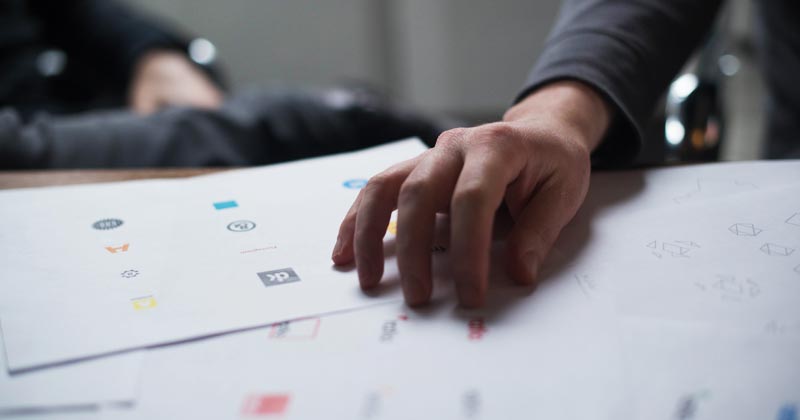A successful logo is…
Distinct – it should uniquely fit the company it represents as a tailor-made icon that is identifiable for one company only.
Meaningful – It should represent the company’s values, history, aesthetic, and customers.
Recognizable – Try the following game to see how many you can recognize! http://www.logoquiz.net/ (If the logo is successful as part of the company’s corporate branding, then you should be able to recognize it instantly)
A good logo can help customers easily identify a brand and associate a product with a brand’s identity. A good logo can be the basis for an entire corporate identity package, helping to unify a company’s collateral, packaging, advertising and web presence. A good logo is crucial to the success of a company. The following are important steps to take when developing a new logo for a client.
#1 Meet with client
A good logo has meaning – asking the client as many questions as possible about their company will help to add meaning to the logo when it is being created.
Discuss client’s identity
What do they do/sell? What words best describe what they do? What is their history and prospects for the future of their company? What is their customer demographic? (age, gender, etc…)
#2 Create a list of words that associate with the client’s name and brand identity
This can be a simple list or in the form of a web chart such as the one I created on visualthesaurus.com.
The following are excellent internet resources for developing word lists and pictorial associations.
Visual dictionary: http://www.infovisual.info/volume_en.html
Visual Thesaurus: http://www.visualthesaurus.com/
Thesaurus: http://thesaurus.reference.com/
#3 Research
Look through books, magazines and internet and sketch ideas as you go. This does not mean to copy any logos. Doing so would defeat one of the key elements of a successful logo design – that it is distinct from every other logo used by competing companies. However, during research, seeing other logos may spark ideas about the one you are working on that might not have occurred before.
Inspirational logo design: http://faveup.com/
Logo design trends for 2008: http://www.logoorange.com/logo-design-08.php
Logo design trends for 2007: http://www.logoorange.com/logo-design.php
Classic logos throughout history (A-Z): http://www.logoorange.com/logodesign-A.php
Huge database of Logos: http://www.brandsoftheworld.com/
#4 Create a database of words, pictures, colors and fonts that best match the client’s identity.
This will be helpful to draw upon while sketching.
#5 Sketch 50 – 100 or more sketches.
Create as many variations as possible. A logo can consist of a simple illustration (Macintosh), an abstract illustration (Nike), type only (Google) or illustration and type (Adidas).While creating a logo, remember that simple is best. This logo must work in many different sizes. If it is designed at 5 in. x 5 in., can it also be seen well at 1 in. x 1 in.? If not, it may need to be simplified.
#6 With the client, choose the top 3 favorites and create final vector versions in Illustrator
Present these logos each in 3 different sizes – large, medium, and small each in color and black & white. The presentation should be mounted on boards to be displayed to the client. Another great way of presenting the logo is to Photoshop it into various scenes. For example, show it on a hat or a coffee mug or a store sign. From the top 3 versions, the one favorite can be selected.


